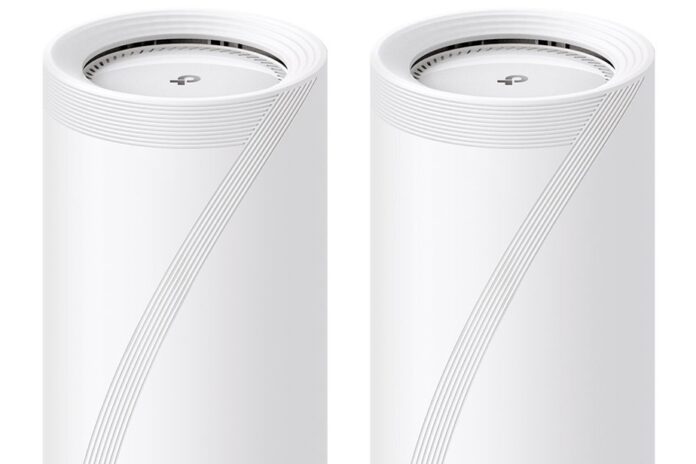Warning: The Deco BE95, with its two mesh routers, is far beyond the needs and means of the basic user. But since we like to squawk in front of a plush house, we mercilessly tested this set of WiFi 7 routers offering a combined speed of 33 Gbps. Apart from its price, there is nothing to complain about.
If you haven’t even had time to get used to WiFi 6 and 6E, you have every right to groan: WiFi 7 is the next WiFi standard. Identified by the name IEEE 802.11be Extremely High Throughput (EHT), it adds the 6 GHz band to the spectrum available for connected devices and enables up to 46 Gb/s transfer, increases the capacity of networks by five times and theoretically offers a hundred times lower latency than with WiFi 6.
As you can imagine, few devices transmit or receive WiFi 7. The Deco BE95 is one of the first routers on the market to do so, and you have to be a complete geek or a hyperactive critic to have three compatible phones like this This is our case.
The two routers making up our Deco BE95 set operate in a mesh network. The main router, in the living room in our case, is directly connected to the modem and transmits the signal to a second router using exclusively one of the two 6 GHz bands. This system is considered more stable and more efficient than adding a network extender. Its MU-MIMO capabilities allow up to 16 beams to be sent simultaneously to as many connected devices.
This is what we tested extensively for a month, without being able, obviously, to confirm the stratospheric speeds in tens of Gb/s. First point, our Deco BE95s never showed a sign of instability and passed WiFi to our sixty (yes) connected devices without any problems. No annoying delays in video games or conference calls, and enough intelligence to direct each device to the nearest router. As for reliability, nothing to report, which is excellent news since that is what we first ask of a router.
Regarding the effectiveness of the mesh network, the news is also good, dozens of measurements with Ookla’s Speedtest have shown us this. In the best conditions, with a wired connection or connected to the main router in the living room, we obtained the maximum speed allowed by our provider, Videotron, i.e. 947 Mb/s for download and 56 Mb/s for upload.
Our devices connected to the secondary router in the office were going to get a little less speed, sometimes up to 72 Mbps less. The latency was also a little higher, by around ten milliseconds at most. For a mesh network, this is excellent performance.
For the most curious, here is the results of our tests. They were made easier by the fact that we can choose, in the Deco app, which router and which frequency our device should connect to. The results are categorized by router, primary in the living room and secondary in the office, as well as with wired Ethernet connections.
Each router has four Ethernet inputs, two at 10 Gb/s and two at 2.5 Gb/s, and together covers 7,800 square feet of space for 200 devices. This was obviously more than enough for a residence like ours of 1500 square feet on three levels.
The Deco app is a model of clarity and allows you to see connected devices, their network usage and their preferred router at a glance. You have the option of keeping the same name for the 2.4 GHz, 5 GHz and 6 GHz networks, or choosing different ones. A network optimization tool is available and allows you to favor the least frequented channels. Some devices may be privileged and the basic functions of TP-Link HomeShield are offered free of charge, which scans the network for threats and allows you to configure parental controls. The Total Security plan, which includes antivirus and secure VPN, costs $179.99 per year.
The application includes a tab for controlling home automation devices, but only those manufactured by TP-Link appear there.
The two routers equipped with 12 internal antennas are large, there is no way to slip them discreetly into the decor.
The question of purchase seems very out of place here, at this price and in a section usually dealing with devices for the average consumer. It’s up to you to decide if your WiFi network is worth such a considerable investment. As far as we are concerned, our job was to evaluate the quality of the BE95, and the result is unequivocal: we are dealing here with a set of high-end routers, ready for the next WiFi standard and intended for demanding users.















